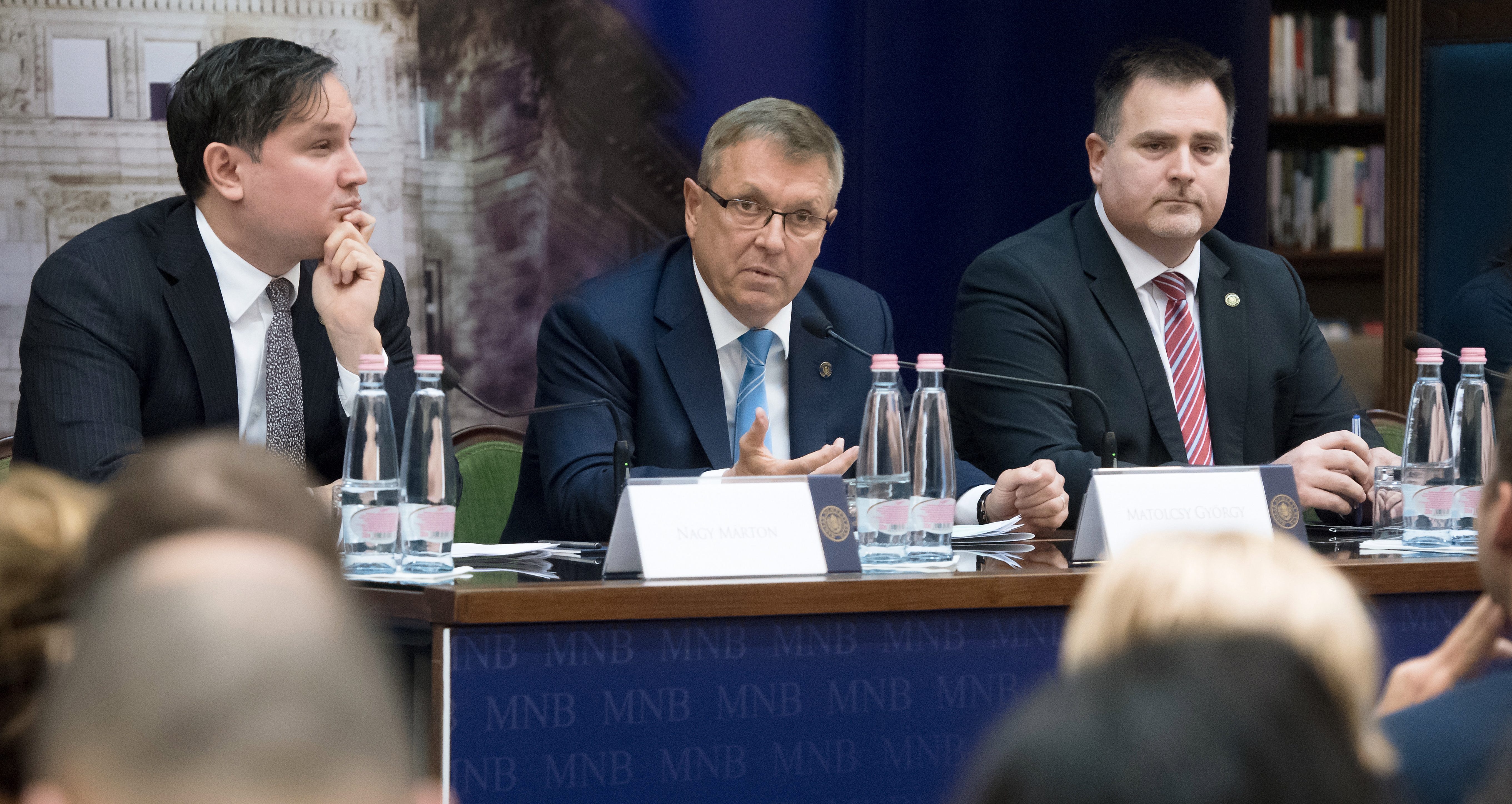Hungary’s policy makers raise O/N central bank deposit rate 10 bp to -0.05 pc
The National Bank of Hungary’s Monetary Council decided to raise the O/N central bank deposit rate by 10 bp to -0.05 percent at a monthly policy meeting on Tuesday.
The decision caused the “interest rate corridor” — the difference between the O/N deposit rate and the rate for the central bank’s O/N collateralised loan — to narrow from 105 bp to 95 bp and marked the first tightening in years. However, at a press conference after the meeting, central bank governor György Matolcsy said the tightening did not signal the start of a new monetary policy cycle. He said
the NBH had taken the “necessary” and “sufficient” steps to achieve the inflation target, adding that the nature and character of monetary policy would remain loose.
The Council left the O/N collateralised central bank loan rate as well as the base rate, which is paid on mandatory reserves, unchanged at 0.90 percent.
The Council has left the base rate on hold since signalling an end to an easing cycle at a policy meeting in the spring of 2016. Afterward, the rate-setters used targeted, unconventional instruments to ease monetary policy further. However, after recent policy meetings, the Council has said it is “prepared for the gradual and cautious normalisation of monetary policy”.
At the policy meeting on Tuesday,
the Council set the amount of liquidity to be crowded out from central bank instruments at “at least” 300 billion-500 billion forints, down from 400 billion-600 billion forints in Q1. The rate-setters take the level into account when setting the stock of central bank swap instruments.
The Council acknowledged in the statement that the National Bank of Hungary had “met its inflation target” as its measure of core inflation excluding indirect tax effects, an indicator of underlying inflation, rose to 3 percent at the beginning of 2019.
The Council said inflation “will fluctuate around” the 3 percent target in the coming quarters, while the measure of core inflation excluding indirect tax effects is “expected to continue to rise until the autumn months and then to decline from the end of 2019”.
The Council also noted that “persistently buoyant” domestic demand is boosting the pace of price increases, while weakening external activity is restraining that pace, and said it would assess the effects of this “dichotomy” on the maintenance of price stability over the 5-8 quarter horizon of monetary policy.
“The monetary policy stance will continue to be accommodative, economic agents’ financing costs will remain favourable,” the Council said, adding that it applies a “cautious approach” to policy decisions and relies “mainly” on the macroeconomic and inflation projects in the NBH’s quarterly Inflation Report.
Source: MTI
please make a donation here
Hot news
Hungary to extend M6 motorway and build new bridge in Mohács by 2028
Going home for Christmas? Budapest to increase airport shuttle bus frequency
End of an era: Hungarian Client Gate officially retires in 2025! What’s replacing it?
Huge explosions detected in southern Hungary’s Baranya County: here’s what caused them
Breaking: Budapest to overhaul parking system – Fee hikes, new zones, and public transport incentives
Breaking: Budapest Airport runway closed due to stranded aircraft – UPDATED with airport statement





